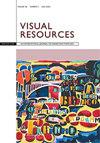Digital Art History as the Social History of Art: Towards the Disciplinary Relevance of Digital Methods
IF 0.3
0 ART
引用次数: 12
Abstract
Can we have a critical art history using digital methods? To answer this question, we need to ask what are the critical questions in art history that demand and are best suited to specific digital methods? This article argues that asking a critical question involves taking up the long art-historical tradition of the social history of art. Social art history is not satisfied with a social context for art, but rather reverses this equation by arguing that an analysis of art, artist, and audience must tell us something structurally about society. It is these kinds of questions that critically engage in broader art-historical debates. When questions such as these rely on large bodies of evidence – which they often do if “society” is their focus of study – then the scale of the project is, in today’s context, best suited for digital methods. In sum, digital art history lets us address the tradition of the social history of art in new ways. The following essay seeks to advance a nuanced triangulation between our art-historical topics of study, our methodological debates, and computational analysis. In specific terms, exploring alternative subjects of art history as well as the particular analytical methods of social art history opens up the debates in the discipline to a more critical intervention with digital methods.作为艺术社会史的数字艺术史:走向数字方法的学科相关性
我们能不能用数字化的方法来研究批判艺术史?为了回答这个问题,我们需要问艺术史上哪些关键问题需要并且最适合特定的数字方法?本文认为,提出一个批判性的问题涉及到继承艺术史的社会历史悠久的艺术历史传统。社会艺术史并不满足于艺术的社会背景,相反,它认为对艺术、艺术家和观众的分析必须从结构上告诉我们一些关于社会的东西,从而颠覆了这个等式。正是这些问题批判性地参与了更广泛的艺术史辩论。当诸如此类的问题依赖于大量证据时——如果“社会”是他们的研究重点,他们通常会这样做——那么在今天的背景下,项目的规模最适合使用数字方法。总而言之,数字艺术史让我们以新的方式处理艺术社会史的传统。下面的文章试图在我们的艺术史研究主题、我们的方法论辩论和计算分析之间推进一种微妙的三角关系。具体而言,探索艺术史的替代主题以及社会艺术史的特定分析方法,打开了该学科的辩论,以更批判性的方式干预数字方法。
本文章由计算机程序翻译,如有差异,请以英文原文为准。
求助全文
约1分钟内获得全文
求助全文

 求助内容:
求助内容: 应助结果提醒方式:
应助结果提醒方式:


